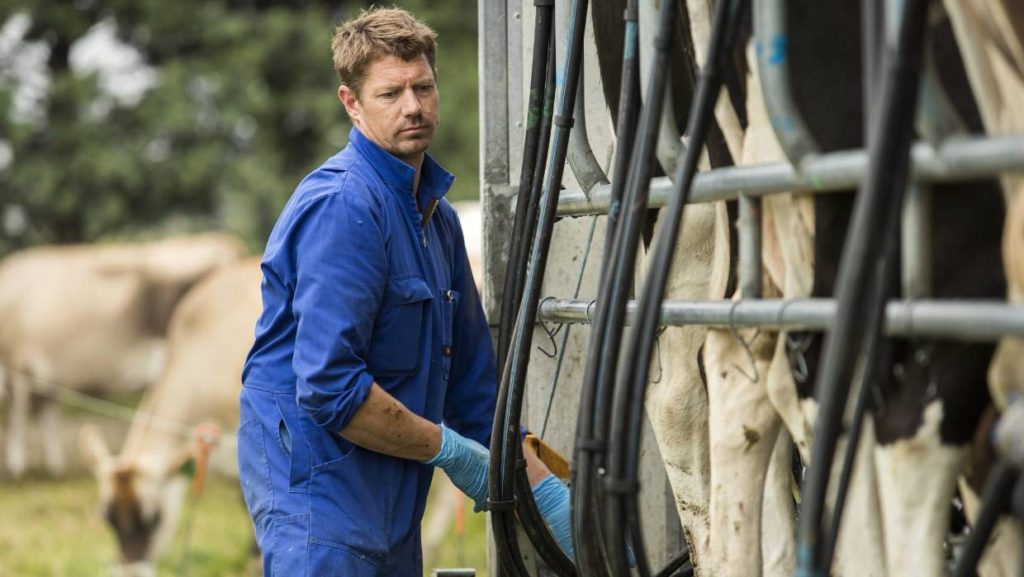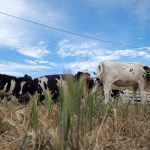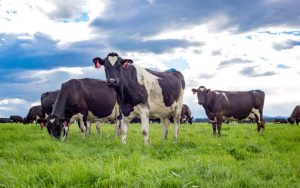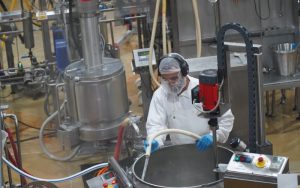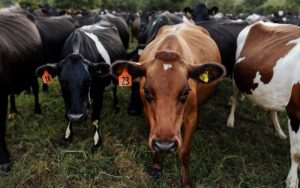
Home brew beer is a good example. Yeast is added to the brew, the yeast is fed sugar and they produce carbon dioxide (CO2) and alcohol.
You have an input, a microorganism and an output.
Fermentation is not new and man has used it for good and bad, sauerkraut and kombucha are clear examples of the latter. The good includes such things as penicillin.
In 1928 penicillin was discovered accidentally by Alexander Fleming. He found that the juice from the common fungus, Penicillium, found in blue cheese and in your fruit bowl, actually killed bacteria.
Labs would grow this bacteria and harvest painfully small amounts of penicillin. Pharmaceutical giant Pfizer developed a fermentation technique. The input was lactose, the microorganism is the penicillium fungus and the output is penicillin.
Today the nucleus of the penicillium fungus is manipulated to give different types of semi-synthetic penicillin. It costs $20 to produce a kilogram of penicillin today as opposed to $600 in the 1950s.
Fermentation is also used to make a fully synthetic form of the human hormone insulin. Human DNA is inserted into an E. Coli bacteria cell. The bacteria are fed sugar and during fermentation the bacteria output insulin.
This fully synthetic insulin is an exact molecular copy of insulin made in the human pancreas. Prior to this technology, insulin was harvested via the rather inefficient process of killing piglets.
Synthetic substances are everywhere. Vitamin C is ascorbic acid. The inefficient way to harvest ascorbic acid is to take fruit and process it heavily until you are left with just ascorbic acid.
Most of the vitamin C used in food and supplements today is fully synthetic ascorbic acid. It’s made by fermenting corn syrup and bacteria that output ascorbic acid.
Like insulin, the synthetic version is molecularly identical to natural ascorbic acid.
Former New Zealand company Lanzatech has developed a fermentation process using a bacteria that uses CO2 as a food source and outputs ethanol. You can see how that solution is in demand.
One of the oldest fermentation processes is our beloved cows gut. The input is grass, the microorganisms in the gut happily ferment away and the output is energy. The cow uses this energy to power the body and one of the body’s functions is to produce milk.
Milk is a very complex substance and it is very nutritious. After all, it is designed as a complete energy source for growing calves. Now, there’s a statement bound to trigger our vegan readers if ever there was one.
We use the various components of milk for lots of different things.
In many cases, supplement manufacturers or food companies only require one specific component of milk, such as a protein like lactoferrin or casein.
Just like the previous examples, scientists are looking to create specific proteins by fermentation. These scientists are genetically modifying bacteria that use a food source such as sugar and during fermentation, they output a very specific protein.
As with vitamin C, it may be much more efficient to create the exact substance required by fermentation as opposed to deconstructing an entire fruit.
Our poor old cow has a few things going against her here. She produces byproducts such as methane and nitrous oxide. By comparison, the fermentation process produces a fraction of the byproducts.
Fermentation is ideal for producing a very specific output like one protein or substance. Fermentation won’t produce complex substances like orange juice or liquid milk. So the humble cow is not obsolete just yet.
But fermentation could produce a dairy protein that could help combine plant proteins or make plant-based milk taste or behave more like cows milk. It’s dairy but it’s not dairy.
The fact that something is not dairy is becoming a very compelling marketing proposition to many people and it will be used ruthlessly by these synthetic protein companies.
Imagine insulin was a consumer food, would modern consumers buy the genetically modified organism version or the natural version that kills piglets?
The ultimate success of synthetic proteins ingredients will depend a lot on the sugar in, to protein out ratio. If the economics work better than milking a cow every day then it will win.
Synthetics are not new, they’re not wacky or weird. Their rise in dairy is very logical and predictable.
The production of synthetic substances will not be perfect. It will require a lot of biomass such as sugar cane. The downside of plant-based agriculture is it generally relies on intensive monoculture agriculture which has significant environmental effects.
The problem for dairy farmers is believability always beats the truth. For many urban people, the dairy industry telling them plants are bad for the environment and cows are good is unbelievable.
The modern dairy farmer must be able to show that dairy is not scary. That will require radical honesty and transparency.
The modern KPI for dairy farmers is believability. If they’re not believable, they’re obsolete.
